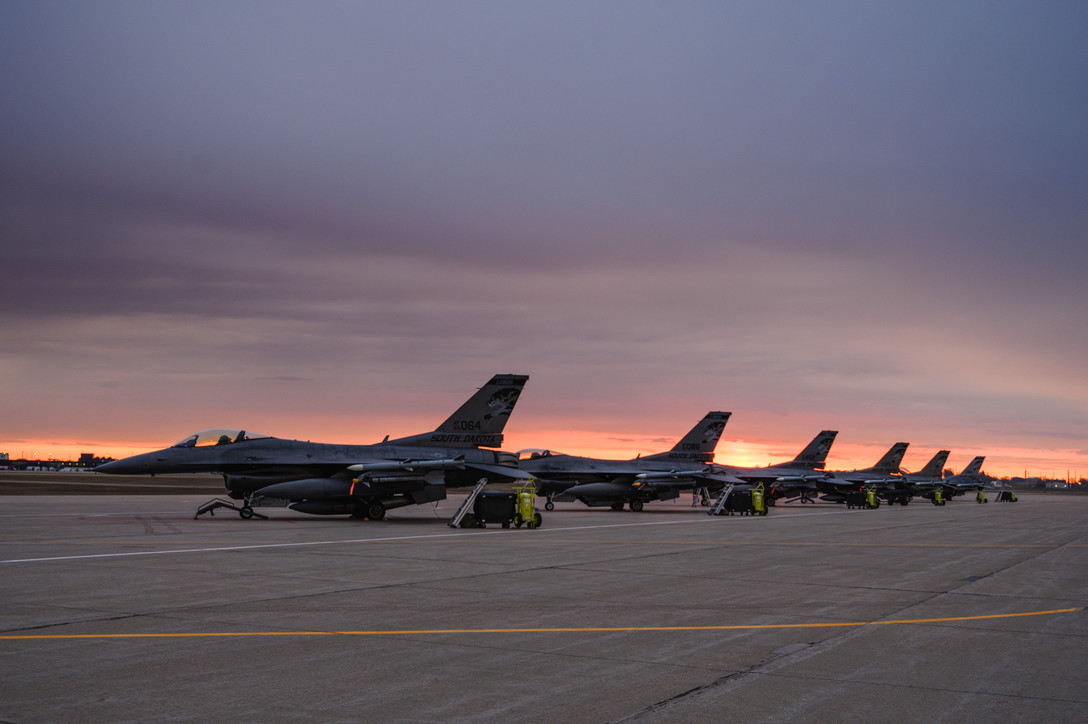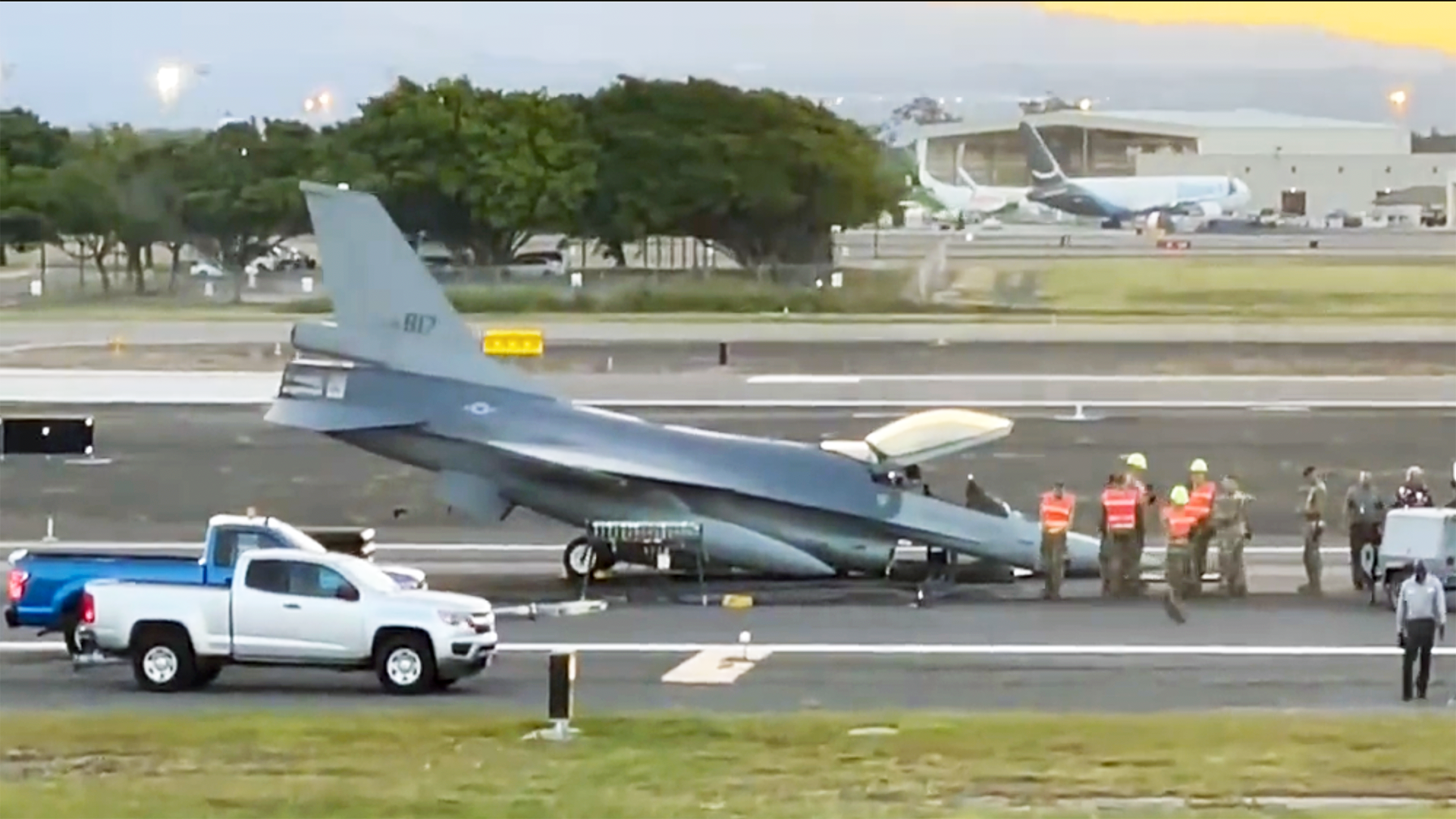A Taiwanese F-16 had to make an emergency landing in Hawaii this week after what was reported to be a problem with the aircraft’s landing gear. While the pilot is expected to make a full recovery from unspecified injuries, the incident marks the third time in a span of one month that an F-16’s nose gear collapsed during landing.
The most recent event involved a Republic of China Air Force, or ROCAF, F-16A which was reportedly being flown by a U.S. Air Force pilot out of Luke Air Force Base in Arizona. The aircraft was apparently headed back to Taiwan as part of an ongoing security assistance program aimed at upgrading the jets to the more modern F-16V standard in light of the country’s rising tensions with China. This will be a critical component of Taiwan’s efforts to modernize its air force, which you can read more about here.
Honolulu’s Star Advertiser reported that the F-16A’s front landing gear failed to deploy on approach and resulted in what the Hawaii Department of Transportation (DOT) is calling a “hard landing.” As can be seen in videos filmed at the scene, the aircraft’s nose collapsed atop the tarmac as a result. The Star Advertiser article went on to add that the Hawaii DOT said the pilot resorted to using the jet’s tail hook in an attempt to stop the aircraft, which is normal procedure in many scenarios where the stability of an Air Force fighter’s gear is uncertain, among other malfunctions. However, the airport’s runway has apparently remained unscathed by the event but will be closed off until the aircraft has been cleared. Multiple runways at Hawaii’s largest airport have retractable arresting cables as Hickam AFB is colocated there along with its squadron of F-22s.
Questions have also surfaced regarding the reasoning behind the F-16’s whereabouts at the time of the emergency landing. Like many other military aircraft, both U.S. and allied, Hawaii is often used by Taiwanese military aircraft as a transit point across the Pacific. In this situation, to and from Luke AFB, where Taiwanese F-16 pilots are trained, which would explain why the pilot ended up at Daniel K. Inouye International Airport in Honolulu. Movements of Taiwan’s fighters abroad are not usually publicized due to Taipei’s highly contentious relationship with Beijing.
As mentioned earlier, this is the third landing mishap resulting in a collapsed nose gear of an F-16 to have occurred in the United States in a month, with the previous two both involving the South Dakota Air National Guard’s 114th Fighter Wing. The first incident took place on May 11 when an F-16 aircraft assigned to the unit went off the end of Runway 15 at Joe Foss Field in Sioux Falls after returning from what the 114th Fighter Wing’s statement described as being a routine training mission.
The second incident transpired only a couple of weeks later on May 31 when an F-16C aircraft assigned to the 114th Fighter Wing experienced what appeared to be a very similar landing mishap. This time around, the aircraft’s landing extended beyond Runway 33 as opposed to Runway 15 and was confirmed to be returning from another routine training mission. The pilots involved in both circumstances did survive.
After both of the mishaps in South Dakota, the 114th Fighter Wing released statements to the unit’s Facebook page detailing that the causes of the accidents would be investigated and that the Air National Guard is positioning an interim board to begin that process. That committee was later designated as the Interim Safety Board and will now be tasked with collecting and preserving evidence for further accident and safety board investigations. The 114th’s statement went on to insist that once sufficient data has been gathered, crews would begin recovery of the aircraft and restoration of the incident sites.
“Even though we train to do this every day, there is still risk involved. We are grateful that no one was harmed in this incident,” said Col. Mark Morrell, 114th Fighter Wing commander.

In all three incidents, the F-16’s noses appeared to have suffered the brunt of the damage, although their engines would have been at high risk of ingesting damaging debris, as well. Still, the nose is where the jet’s radar and many of its sensitive avionics are located. Landing nose down also can put extreme stress on the airframe.
With three landing incidents now on the books, 2022 is already tied with 2021 in terms of F-16 flight mishaps as can be deduced through data compiled by the Air Force Safety Center, although this year there haven’t been any fatalities, thankfully.
What this means for the Air Force and the F-16 remains to be seen. There are yet to be any indications that the causes of these incidents are directly linked to each other, but The War Zone has since reached out to the Air Force for more information. Whether it will be treated as a systemic issue or as a few unnerving flukes is unclear, but the F-16 fleet in the United States has certainly suffered a peculiar month.
Contact the author: Emma@thewarzone.com
